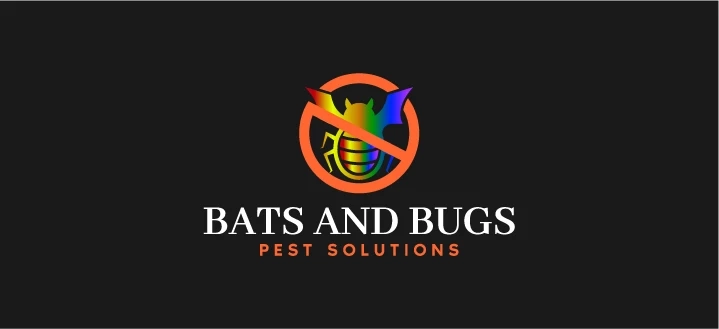Introduction
Maintaining a pest-free home is a significant concern for many homeowners. Pests, including bats and bugs, can cause considerable damage to property and pose health risks to occupants. This article explores effective solutions to manage and eliminate bat and bug infestations, ensuring a safe and comfortable living environment. Bat And Bugs Pest Solutions
Understanding the Problem
Pest infestations are more than just a nuisance; they can lead to severe structural damage and health problems. Bats, for example, are known carriers of diseases like rabies and histoplasmosis. While beneficial to the ecosystem by controlling insect populations, their presence in homes is undesirable. Bugs, on the other hand, can range from harmless nuisances to dangerous vectors of diseases. Common household pests include ants, cockroaches, bedbugs, and termites. Understanding the specific problems caused by these pests is crucial in developing effective solutions.
Identifying Bat Infestations
Bats typically seek out dark, secluded areas such as attics, barns, and chimneys to roost. Signs of a bat infestation include droppings (guano), the presence of oily stains on walls or ceilings, and chirping noises. Guano, in particular, can pose significant health risks, as it can harbor the fungus Histoplasma capsulatum, which causes histoplasmosis. It’s essential to identify a bat infestation early to mitigate potential health hazards and prevent structural damage to your home.
Safe and Humane Bat Removal
The most effective bat and bugs pest solutions prioritize humane and environmentally-friendly methods. For bats, exclusion is the preferred method. This involves sealing entry points while allowing bats to leave the structure unharmed. Professionals use one-way exclusion devices that enable bats to exit but prevent re-entry. It’s crucial to avoid exclusion during the maternity season (usually between May and August) when young bats are unable to fly. After the exclusion process, all entry points should be sealed, and any contaminated areas should be thoroughly cleaned and disinfected.
Dealing with Common Household Bugs
Bugs in the home can be both annoying and harmful. Identifying the type of infestation is the first step in effective management. Different bugs require different approaches:
Ants: Ant infestations are common and can be challenging to manage due to their large colonies. Using bait traps and sealing entry points can be effective. Natural remedies, such as a mixture of vinegar and water, can deter ants without harmful chemicals.
Cockroaches: These pests are not only unsightly but also potential carriers of diseases. Maintaining cleanliness, eliminating food and water sources, and using bait stations or insect growth regulators (IGRs) can control cockroach populations.
Bedbugs: Bedbugs are notoriously difficult to eradicate. Professional pest control services are often required for severe infestations. Heat treatments and insecticides are commonly used methods.
Termites: Termites cause extensive damage to wooden structures. Regular inspections, the use of termite baits, and soil treatments with termiticides are effective prevention and control methods.
Integrated Pest Management (IPM)
An effective bat and bugs pest solution incorporates Integrated Pest Management (IPM) principles. IPM is an environmentally-friendly approach that combines multiple strategies to manage pests sustainably. Key components of IPM include:
Inspection and Monitoring: Regular inspections help identify early signs of infestations and monitor pest activity. This proactive approach allows for timely interventions.Preventive Measures: Sealing entry points, maintaining cleanliness, and reducing clutter can prevent pests from entering and thriving in your home.Biological Controls: Utilizing natural predators and beneficial organisms can help control pest populations without harmful chemicals.Chemical Controls: When necessary, using pesticides in a targeted and judicious manner can effectively manage infestations. Always choose products that are safe for humans and pets.Education and Awareness: Educating homeowners about pest behavior, prevention techniques, and safe control methods is essential for long-term pest management. Bat And Bugs Pest SolutionsThe Role of Professional Pest Control Services
While DIY methods can be effective for minor infestations, professional pest control services are often necessary for severe or persistent problems. Trained professionals can accurately identify pests, assess the extent of the infestation, and implement comprehensive treatment plans. They also have access to specialized equipment and products not available to the general public. Regular pest control services can provide ongoing protection and peace of mind.
Preventing Future Infestations
Prevention is the most effective way to manage pests. Implementing regular maintenance routines and addressing potential entry points can significantly reduce the risk of future infestations. Key preventive measures include:
Sealing Cracks and Gaps: Inspect your home for cracks, gaps, and holes that could serve as entry points for pests. Use caulk or weatherstripping to seal these areas.Proper Waste Management: Dispose of garbage regularly and use sealed bins to prevent attracting pests.Maintaining Cleanliness: Regularly clean and vacuum your home to remove potential food sources and nesting sites for bugs.Landscape Maintenance: Trim trees and bushes away from your home to reduce hiding spots and entry points for pests.Conclusion
Effective Bat And Bugs Pest Solutions require a comprehensive and proactive approach. By understanding the behavior and risks associated with these pests, implementing Integrated Pest Management strategies, and seeking professional assistance when necessary, homeowners can achieve a pest-free living environment. Regular maintenance and preventive measures are essential to ensure long-term success in pest management. With the right knowledge and tools, it’s possible to protect your home from the unwanted intrusions of bats and bugs.


